Program Overview
St. Mary’s College of Maryland establishes guidelines and procedures to protect individuals from heat-related exposures and illnesses. This program applies to all College employees, students, and contractors who are exposed or who have the potential to be exposed to heat hazards on campus property. The purpose of this program is to ensure all College employees working outdoors or in unconditioned indoor environments where environmental risk factors for heat illness are present, are protected from heat illness and are knowledgeable of heat illness symptoms, methods to prevent illness, and procedures to follow if symptoms occur.
Regulation
Maryland Occupational Safety and Health (MOSH) Heat Stress Standards apply to both indoor and outdoor workplaces where employees are exposed to a heat index at or above 80 degrees Fahrenheit [COMAR 09.12.32]. The heat index, or apparent temperature, is an indication of what the temperature feels like to the body while taking into account relative humidity and air temperature.
Exemptions
- Employees who are incidentally exposed to a heat index at or above 80ºF for less than 15 minutes per hour.
- Emergency operations and essential services.
- Work areas in buildings, structures, and vehicles that have a mechanical ventilation system or fan that maintains the heat index below 80ºF.
What are heat-related illnesses?
Exposure to abnormal or prolonged amounts of heat and humidity without relief or adequate fluid intake can cause various types of heat-related illness. People suffer heat-related illness when their bodies are unable to regulate internal body temperature. In hot weather, the body normally cools itself by sweating. Under some conditions, however, sweating isn't enough. Such conditions include: high humidity, where air movement is limited, working in direct sun, heavy physical exertion and poor physical condition. Some medical conditions and medications can also reduce the body's ability to tolerate heat.
There are 3 types of heat-related illness:
- Heat Cramps
- Heat Exhaustion
- Heat Stroke
Department Supervisors and Managers
- Monitor heat index throughout the work shift, using direct measurements of temperature and humidity, National Weather Service or other recognized source, NIOSH Heat Safety Tool application.
- Ensure personnel who work outdoors complete required heat safety training initially (upon hire or prior to starting work outdoors) and annually:
- Implement the written Heat Illness Prevention plan.
- Implement high-heat procedures and ensure appropriate worker acclimatization.
- Facilitate cool-down rests in the shade and supply drinking water.
- When there is a high heat advisory, meet with the staff to discuss Heat Illness prevention plan, provide reliable means of summoning emergency medical services, monitor employees well-being and recognize symptoms of heat illness.
College Employees and Contractors
- Complete required training initially and annually:
- Follow your department's Heat Illness Prevention Plan
- Drink adequate amounts of suitably cool water (up to one quart/hour).
- Request breaks when needed.
- When temperatures are at or above 90ºF take preventative cool-down rest breaks of at least 10 minutes every 2 hours.
- When temperatures are at or above 100ºF take preventative cool-down rest breaks of at least 15 minutes every hour.
- Recognize and monitor yourself for symptoms of heat-related illness and know your personal risk factors for heat-related illness, which may include medications, obesity, diabetes, heart disease among others.
Environmental Safety
- Develop and oversee the personnel safety and compliance requirements.
- Provide Heat Safety training and update as needed.
- Provide a template Heat Illness Prevention Plan and update as needed.
- Provide technical assistance to units and departments.
- Incidence response, tracking and prevention
- Serve as College representative and liaison to Maryland Occupational Safety and Health for all campus locations.
